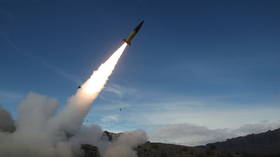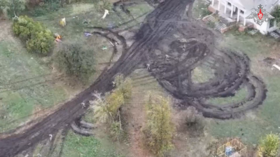Key oil region powers through global crisis
Russia’s mighty oil heartland in western Siberia is still beating strong, despite oil prices dropping throughout the world, meaning companies operating in the Khanty-Mansiysk region are by no means slowing down.
Modestly dubbed the country’s oil capital, Khanty-Mansiysk has celebrated its nine billionth tonne of crude to be extracted from the region’s depths. Oil production itself makes up about 80 per cent of the area’s income, though authorities are planning to diversify the region and decrease that figure to 50 per cent. However, as of yet, most oil companies are not inclined to do so.
“Right now we don’t see the overall situation in Russia affecting our company. The salaries are stable,” says Larisa Nikurova from Gaspromneft Khantos. “The volume of production remains at the same level. We only optimise our expenses.”
Workers who come from different regions of Russia say they’re happy with their pay, the work conditions and the latest technology used on the oil fields. Even those who are not involved in the industry say the region is growing very quickly. Oil money is spent primarily on education, and medical and social facilities.
The ‘Black gold’ map
The shelves in one of local libraries, built thanks to the influx of oil money, store different kinds of core samples found in the region during oil extraction. They are used to study the presence of oil in the soil, its quantity, and its quality.
During Soviet times the samples were simply thrown away, as oil was close to the surface and there was no need to study them. Today, however, the so-called ‘easy oil’ has been exhausted and the library aids in finding new reserves deeper underground.
“At the end of the 90s, it was decided to collect and keep all the core samples,” says Sirin Sharifullin from Core Storage. “We collected them from different geological research enterprises, from forests and industrial bases and kept them here in boxes.”
The core samples help to draw a map of the region's oil resources and exhausted fields – and it illustrates how rich the Khanty-Mansiysk region is.
“The brown spots label oil fields that are already open. In the east of the region there are some white spots, which means our geologists still have quite a lot of work to do,” explained Sharifullin.












